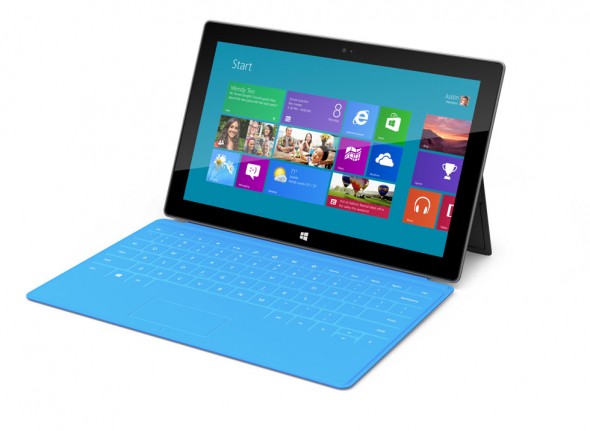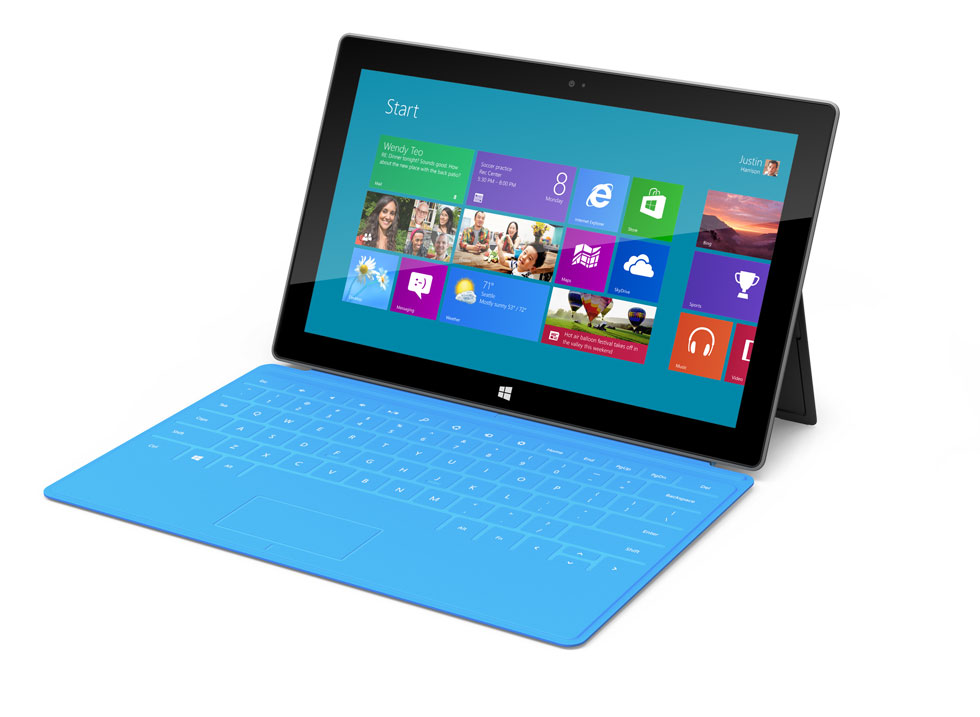
Microsoft’s new tablets will soon arrive in two versions, but are they right for your business and personal needs? Microsoft Surface is a line of tablets running under the company’s next gen operating system. These tablets also mark Microsoft’s debut into the crowded tablet market. Microsoft is now building and branding its tablets, efficiently competing with some of its hardware partners, such as Lenovo, Hewlett-Packard, and Dell.
The Windows Surface Tablets have been rumored to debut in the market later this year. The Surface tablets will be available in two unique versions and run on a still unnamed ARM CPU. The Surface utilizes a 10.6-inch ClearType LCD that is quite identical to modern HDTVs, so that many of your movies and television shows can run smoothly on your tablet. The Surface for Windows 8 Pro will also support digital inking and optical bonding. When you are writing with a Stylus, it will feel like you are directly scribbling on the page, and not on a glass on top of it. Another interesting feature of the Surface tablets is its Type Cover. Just like the iPad’s Smart Cover, these covers are attached magnetically to the tablet’s edges. The cover features a two-button pad and buttons for Window’s Metro UI navigation. When it is flipped back, the keyboard shuts off automatically. Aside from the tablet’s rear and front HD cameras, Surface was mum on photo imaging details. This only means that these devices will have at least 720p
capture ability.
A Tablet or a Hybrid Ultrabook
The stage is set for the new mobile device battle. The winner can set a brand new desktop standard for office workers and consumers searching for a better alternative to heavy and bulky laptops. Thinner, lighter, and more powerful factors are guiding the new designs for laptops, ultrabooks, tablets, and other hybrids. Much ado was made during the 2012 Consumer Electronics Show on Intel’s so-called ‘ultrabook’. Ultrabooks are a line of portable laptops featuring the tablets’ anorexic dimensions without compromising full-size keyboards and PC performance. If you are thinking about getting a tablet or ultrabook for your next mobile workforce, make sure you consider the factors stated below.
Ultrabook Advantages
- Wider screens. Ultrabooks provide larger displays that are best for product demos, presentations, and desktop sharing. This bigger visual real estate is also perfect for teleconfering and multitasking.
- Physical keyboards. Ultrabooks offer the conventional keypads, unlike the tablets with virtual keyboards that are ill-fitted for making sales reports, lengthy business plans, graphs, and many more.
- Improved compatibility. Despite the thousands of apps for tablets and smartphones, ultrabooks, still have the best compatibility features with a wide range of Web and cloud apps, desktop utilities, and online services.
Ultrabook Disadvantages
- If price and portability are most crucial, then a tablet is all you need.
- Current choices do not push the computing envelope and aren’t built with extras, like Blu-Ray devices and video card capabilities.
- Provided you won’t mind packing a few pounds and cramming bigger models to your carry-on, standard laptops can be had for less.
Conclusion
Overall, ultrabooks are the perfect-fit for social networking wizards, road warriors, and people with heavy multimedia needs. They provide consumers versatility, portability, and easy access to brilliant, powerful systems.

